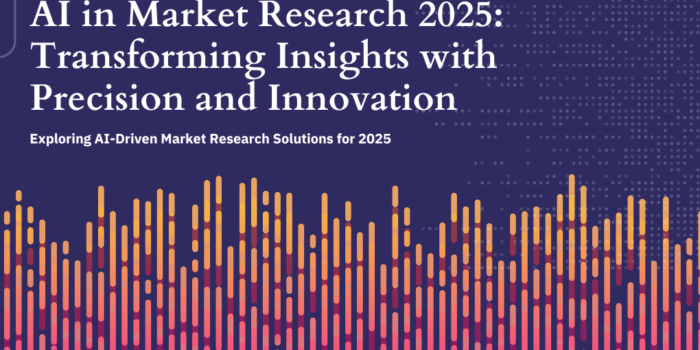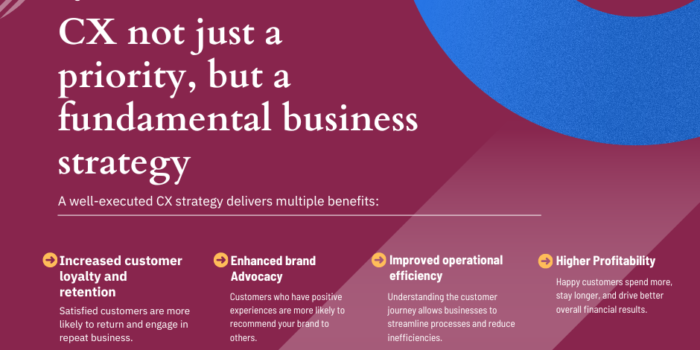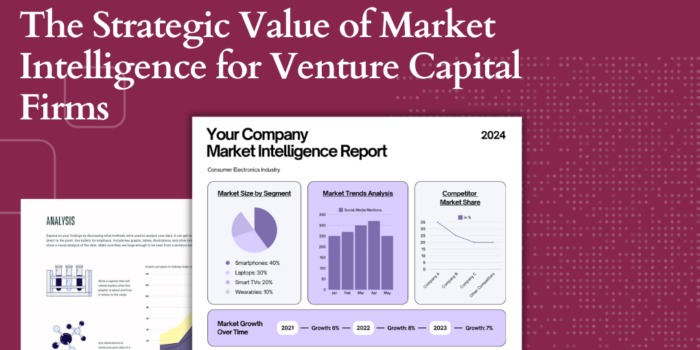Predictive market research powered by artificial intelligence hasemerged as a game-changing tool for companies seeking to anticipate customer needs, identify emerging opportunities, and mitigate potential risks before they materialize. At Knometrix, we’re seeing firsthand how this revolutionary approach is transforming the way businesses make strategic decisions. In an era where being reactive is no longer sufficient, predictive capabilities are becoming the cornerstone of sustainable business success.
What Is Predictive Market Research?

Predictive market research uses advanced AI algorithms to analyze historical data, identify patterns, and forecast future market behaviors and consumer trends. Unlike traditional market research that provides a snapshot of current conditions, predictive research offers a forward-looking perspective that enables businesses to prepare for what’s coming next. This approach combines elements of statistical modeling, machine learning, and data mining to create a comprehensive view of potential future scenarios.
The power of predictive research lies in its ability to process vast quantities of structured and unstructured data from diverse sources—from sales figures and economic indicators to social media conversations and search trends. By identifying correlations and patterns that would be impossible for human analysts to detect manually, AI-powered tools deliver insights that can inform everything from product development to marketing strategy and resource allocation.
Types of Predictive Market Research
→Consumer Behavior Forecasting
AI systems analyze purchasing patterns, social media activities, and demographic information to predict how consumers will behave in the future. This helps companies tailor their products and marketing strategies to meet evolving customer preferences.
Advanced consumer behavior forecasting goes beyond simple demographic information to include psychographic profiling, sentiment analysis, and contextual factors that influence purchasing decisions. For example, predictive models can anticipate how seasonal changes, economic shifts, or even weather patterns might affect consumer spending in specific categories. By understanding these nuanced influences, businesses can adjust their offerings, pricing strategies, and promotional campaigns to align perfectly with anticipated consumer needs at precisely the right moment.
→Market Trend Analysis
By processing vast amounts of market data, AI can identify emerging trends before they become obvious, giving businesses the opportunity to capitalize on new market dynamics early.
The most sophisticated trend analysis tools monitor not just existing markets but also adjacent industries and global developments that might create ripple effects in your business sector. They can detect weak signals—subtle indicators of change that might easily be overlooked by conventional analysis. For instance, a small but growing shift in language used in product reviews might signal an emerging consumer value that will soon influence purchasing decisions. Companies equipped with this foresight can innovate ahead of demand, positioning themselves as market leaders rather than followers scrambling to catch up.
→Competitive Intelligence
Predictive tools can monitor competitors’ activities and forecast their likely next moves, allowing companies to develop effective counter-strategies.
Modern competitive intelligence platforms continuously track competitors across multiple dimensions—from pricing changes and product launches to hiring patterns, patent filings, and supply chain adjustments. By analyzing these diverse signals, predictive systems can construct models of competitor strategy and anticipate future market positioning with remarkable accuracy. This intelligence enables businesses to make preemptive moves, such as securing strategic partnerships or developing complementary products that neutralize competitive threats before they fully materialize. Rather than merely benchmarking against current competitor offerings, forward-thinking companies use predictive insights to outmaneuver rivals in the race toward future market opportunities.
→Risk Assessment
AI-powered predictive models can identify potential market risks and disruptions, helping businesses prepare contingency plans and mitigate negative impacts.
Comprehensive risk assessment systems evaluate multiple risk categories simultaneously—regulatory changes, supply chain vulnerabilities, geopolitical developments, technological disruptions, and shifting consumer sentiments. By simulating various scenarios and their potential impacts, these tools help business leaders quantify risks and prioritize mitigation efforts based on both probability and potential business impact. Additionally, continuous monitoring allows for early warning systems that alert decision-makers to emerging threats in time to implement preventive measures or adaptive strategies. This proactive approach to risk management transforms potential disruptions from business-threatening crises into manageable challenges that resilient organizations can navigate successfully.
The Business Advantage: Why Leaders Are Taking Notice
→Faster Decision-Making
In today’s business environment, speed is critical. Predictive market research delivers insights in hours or days rather than weeks or months, accelerating the decision-making process.
The acceleration of business intelligence through predictive analytics represents a fundamental shift in organizational agility. Traditional research methodologies often involve lengthy data collection periods, manual analysis, and report generation processes that can take months to complete—by which time the insights may already be outdated. In contrast, AI-powered predictive systems operate continuously, processing real-time data streams and updating forecasts automatically as new information becomes available. This capability enables “just-in-time” decision-making that responds to market dynamics as they evolve. For businesses operating in volatile markets or fast-moving industries, this compressed insight-to-action cycle can be the difference between capturing emerging opportunities and watching competitors claim them.
→Reduced Uncertainty
By providing data-driven forecasts, predictive research reduces the guesswork in strategic planning, giving business leaders greater confidence in their decisions.
Predictive models don’t just offer single-point forecasts but can generate probability distributions across multiple potential outcomes, allowing executives to understand both the most likely scenarios and the range of possibilities. This nuanced view of the future transforms boardroom discussions from debates based on conflicting opinions to strategic conversations grounded in shared understanding of data-backed possibilities. With clearer visibility into potential market developments, companies can develop more robust strategies that include contingency plans for various scenarios. This approach reduces the risk of strategic miscalculations while giving leadership teams the confidence to make bold moves when opportunities arise, knowing they’re backed by comprehensive analysis rather than intuition alone.
→Competitive Edge
Companies that can anticipate market changes gain a significant advantage over competitors who are merely reacting to current conditions.
The competitive advantage of predictive capabilities manifests across the entire business value chain. In product development, anticipating emerging consumer needs enables innovation that meets market demands precisely when they crystallize. In marketing, understanding evolving customer sentiments allows for messaging that resonates with shifting values and preferences. In operations, foreseeing supply chain challenges or demand fluctuations enables proactive adjustments that maintain efficiency while competitors struggle with disruptions. This comprehensive forward visibility transforms business strategy from a reactive exercise to a proactive design process where companies can shape market conditions rather than simply responding to them. In increasingly crowded marketplaces, this capability to operate “ahead of the curve” becomes a powerful differentiator that can translate directly to market share gains and premium positioning.
→Resource Optimization
Knowing where the market is headed allows for more efficient allocation of resources, reducing waste and improving ROI.
Predictive market insights enable precision in resource deployment that wasn’t previously possible. Rather than spreading investments across multiple potential opportunities based on limited information, companies can concentrate resources where data indicates the highest probability of success. This optimization extends across all business functions—from R&D investments and manufacturing capacity planning to marketing budget allocation and talent acquisition. The financial impact is substantial: reduced inventory costs through more accurate demand forecasting, improved marketing efficiency through precisely targeted campaigns, optimized pricing strategies that maximize margin without sacrificing volume, and strategic hiring that ensures the right capabilities are in place exactly when needed. For publicly traded companies, this resource efficiency often translates directly to improved financial performance metrics that enhance shareholder value.
Challenges to Consider

→Data Quality Issues
Predictions are only as good as the data they’re based on. Incomplete or biased data can lead to inaccurate forecasts and potentially costly strategic missteps. Organizations implementing predictive market research must invest in comprehensive data governance frameworks that ensure information integrity throughout the data lifecycle. This includes establishing rigorous validation protocols, implementing systematic data cleansing procedures, and regularly auditing data sources for potential biases. Companies must also develop strategies for handling missing data that minimize distortion in analytical outputs. The most successful implementations often involve cross-functional data quality teams that combine technical expertise with domain knowledge to continuously monitor and improve the information foundations supporting predictive systems.
→Interpretation Expertise
Even the best predictive models require human expertise to interpret results correctly and apply them to business strategies. The complexity of advanced AI systems creates a risk of misinterpretation or over-simplification if outputs aren’t properly contextualized by professionals who understand both the technical aspects of the models and the business realities they represent. Organizations need to develop integrated teams that bridge the gap between data scientists and business strategists, creating collaborative environments where technical insights can be translated into actionable business decisions. This often requires specialized training programs that help business leaders understand the capabilities and limitations of predictive systems while giving technical specialists greater visibility into strategic business contexts. The most effective organizations develop a shared language around predictive insights that facilitates clear communication across traditionally separate business functions.
→Overreliance Risk
Business leaders must balance predictive insights with human judgment and experience rather than following AI recommendations blindly. There’s a genuine danger in treating predictive outputs as infallible, particularly as these systems become more sophisticated and their internal workings more opaque. Organizations need to establish clear protocols for when and how predictive insights inform decisions versus when human expertise should take precedence. This includes regular evaluation of model performance against real-world outcomes and maintaining healthy skepticism about predictions that contradict established business understanding without clear explanation. Successful implementation requires cultivating a corporate culture that values predictive tools as decision support systems rather than decision replacement systems, preserving the crucial role of human creativity, intuition, and ethical judgment in strategic leadership.
→Implementation Complexity
Deploying effective predictive market research systems involves significant organizational challenges beyond the technical aspects. Integration with existing business processes, alignment with corporate culture, and securing sustained executive sponsorship are critical success factors that shouldn’t be underestimated. Companies often encounter resistance to adoption when predictive insights challenge established practices or conventional wisdom within the organization. Successful implementation requires thoughtful change management strategies that address both technical and human factors—from ensuring compatible technology infrastructure to developing incentive structures that encourage data-driven decision making. Organizations must also consider the regulatory and ethical implications of their predictive capabilities, particularly when consumer data is involved, and establish governance frameworks that ensure responsible use aligned with corporate values and compliance requirements.
Why Now Is the Time to Invest
Market disruptions are occurring with increasing frequency and magnitude in today’s interconnected global economy. The COVID-19 pandemic demonstrated how quickly consumer behaviors can shift, and companies with predictive capabilities were better positioned to adapt. The pandemic accelerated digital transformation across industries by an estimated five years in just a few months, creating new consumer behaviors and business models that continue to evolve rapidly. This unprecedented pace of change is becoming the new normal, with businesses facing overlapping disruptions from technological innovation, changing regulatory landscapes, shifting consumer values, and volatile economic conditions. In this environment, traditional reactive approaches to market research are increasingly insufficient, as they provide insights too late to inform critical strategic decisions. Companies that delay implementing predictive capabilities risk finding themselves perpetually behind market developments, constantly struggling to catch up while more forward-looking competitors shape the future marketplace.
Additionally, as predictive technologies become more accessible and widely adopted, the competitive advantage they offer will diminish. We’re currently in a window where these capabilities still represent a significant differentiator, but that window is closing rapidly. Early adopters stand to gain the most significant benefits before these tools become standard industry practice. Technology democratization is following patterns seen with previous innovations—rapidly declining costs, increasing user-friendliness, and proliferation of standardized solutions are making advanced predictive capabilities available to businesses of all sizes. Organizations that implement these systems now have the opportunity to develop institutional expertise, refine their approaches, and establish data assets that will be difficult for latecomers to replicate quickly. This first-mover advantage extends beyond immediate competitive benefits to include shaping industry standards and consumer expectations in ways that favor early adopters’ strengths and strategic positioning.
The convergence of increased data availability, improved analytical capabilities, and more powerful computing resources has created a unique moment of opportunity for predictive market research. Companies now have access to unprecedented volumes of consumer and market data from diverse sources—from traditional market research to digital footprints, IoT device signals, and social media interactions. Simultaneously, advances in machine learning algorithms have dramatically improved pattern recognition capabilities, while cloud computing has made the necessary processing power economically viable for businesses of all sizes. This triple convergence has created a tipping point where predictive market research can deliver reliable insights with ROI that justifies the investment. Organizations that capitalize on this convergence now position themselves to ride the exponential improvement curve of these technologies, continuously expanding their predictive capabilities while competitors struggle with increasingly obsolete approaches to market intelligence.
The Knometrix Advantage

At Knometrix, we combine cutting-edge AI predictive technologies with seasoned market research expertise to deliver uniquely powerful business intelligence solutions. Our proprietary models are built specifically for your industry context, incorporating domain-specific knowledge that generic analytics platforms simply cannot match. We understand that algorithmic sophistication alone is insufficient without deep industry insight to contextualize findings and translate technical outputs into strategic business implications. Our team of experienced industry analysts works alongside data scientists to ensure that every predictive model we develop reflects the complex realities of your specific market environment.
Our approach ensures that you not only receive accurate forecasts but also practical strategies for leveraging these insights to drive business growth. We recognize that predictive capabilities create value only when they inform concrete actions and measurable business outcomes. That’s why every Knometrix engagement includes dedicated implementation support to help your organization operationalize insights effectively. Our consultants work closely with your leadership team to identify specific business processes where predictive insights can create immediate impact, develop clear implementation roadmaps, and establish performance metrics that track tangible business results rather than just analytical accuracy.
We’ve pioneered an iterative methodology that continuously improves predictive performance through systematic feedback loops and model refinement. Unlike static research reports that quickly become outdated, Knometrix solutions evolve alongside your business and market conditions. Our ongoing monitoring systems automatically detect when model accuracy begins to drift below established thresholds, triggering recalibration processes before performance degradation impacts business decisions. This dynamic approach ensures sustained reliability even in volatile market conditions, providing your organization with a continuously updated view of emerging opportunities and potential challenges.
The future of business belongs to those who can see it coming. Predictive market research isn’t just about forecasting tomorrow—it’s about shaping it to your advantage. With Knometrix as your partner, you gain not just visibility into potential futures but the strategic guidance to actively create the future that maximizes your business potential. Connect with us to explore how we can revolutionize your market research strategies with AI-driven solutions






 Market Research
Market Research Consumer Research
Consumer Research Industry Research
Industry Research Market Entry Strategy
Market Entry Strategy Feasibility Studies
Feasibility Studies Product Research
Product Research User Research
User Research Automobile & Mobility
Automobile & Mobility Banking and Finance
Banking and Finance Consumer Products & FMCG
Consumer Products & FMCG Ecommerce & Retail
Ecommerce & Retail Industry & Manufacturing
Industry & Manufacturing Government & Public Sector
Government & Public Sector Industry Associations
Industry Associations Technology & Software
Technology & Software Venture Capital & PE
Venture Capital & PE Consulting & Advisory
Consulting & Advisory India Entry Market Research
India Entry Market Research Innovation Consulting
Innovation Consulting KX Market Radar
KX Market Radar Business Model Development
Business Model Development Gen Z Navigator
Gen Z Navigator